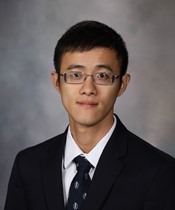Program Information
Evaluation of Multi-Energy Denoising Method On Ultra-High Resolution Photon Counting CT Images
W Zhou*, A Ferrero , D Abdurakhimova , R Marcus , J Fletcher , C McCollough , S Leng , Radiology, Mayo Clinic, Rochester, MN
Presentations
SU-I-GPD-J-57 (Sunday, July 30, 2017) 3:00 PM - 6:00 PM Room: Exhibit Hall
Purpose: To evaluate the effects of multi-energy non local means (MENLM) denoising techniques on spatial resolution and image noise of phantoms and patients scanned on a whole-body photon counting CT (PCCT) scanner using an ultra-high resolution (UHR) acquisition mode.
Methods: A 100 um diameter stainless steel wire phantom was placed in a 20 cm water tank and scanned on the PCCT scanner with the UHR mode (0.25x0.25 mm2 detector size at isocenter) and 140 kV. Images were reconstructed using a sharp kernel (S80) and 0.1x0.1x0.25 mm3 voxels. All images were denoised using MENLM method at different filtering strengths (h = 0.7-1.5). MTF curves were measured using the wire phantom for images pre- and post-denoising. With approval of our institutional review board, 2 patients were scanned using the UHR mode for lung, temporal bone and knee exams. Images were reconstructed using standard filtered backprojection (FBP) algorithm and 0.25 mm isotropic voxels. Each image set was then denoised using the MENLM (h = 0.7). Image noise was measured and compared between the FBP and MENLM images, and the noise reduction was quantified.
Results: Similar MTF curves were observed for the original FBP images and the MENLM-denoised images, indicating the MENLM algorithm maintained the spatial resolution. Qualitative assessment of clinical images confirmed no visible loss in spatial resolution using the MENLM. In addition, image noise was reduced from 182, 170 and 176 HU (FBP) to 49, 45 and 36 HU (MENLM), resulting in 73.1%, 71.2%, 79.5% noise reduction for the lung, temporal bone and knee exam, respectively.
Conclusion: Denoising techniques using MENLM result in substantial reduction in image noise for UHR acquisition with photon counting CT, without largely degrading spatial resolution.
Funding Support, Disclosures, and Conflict of Interest: The project described was supported by Grant R01 EB16966 from the National Institute of Health, in collaboration with Siemens Healthcare.
Contact Email:
